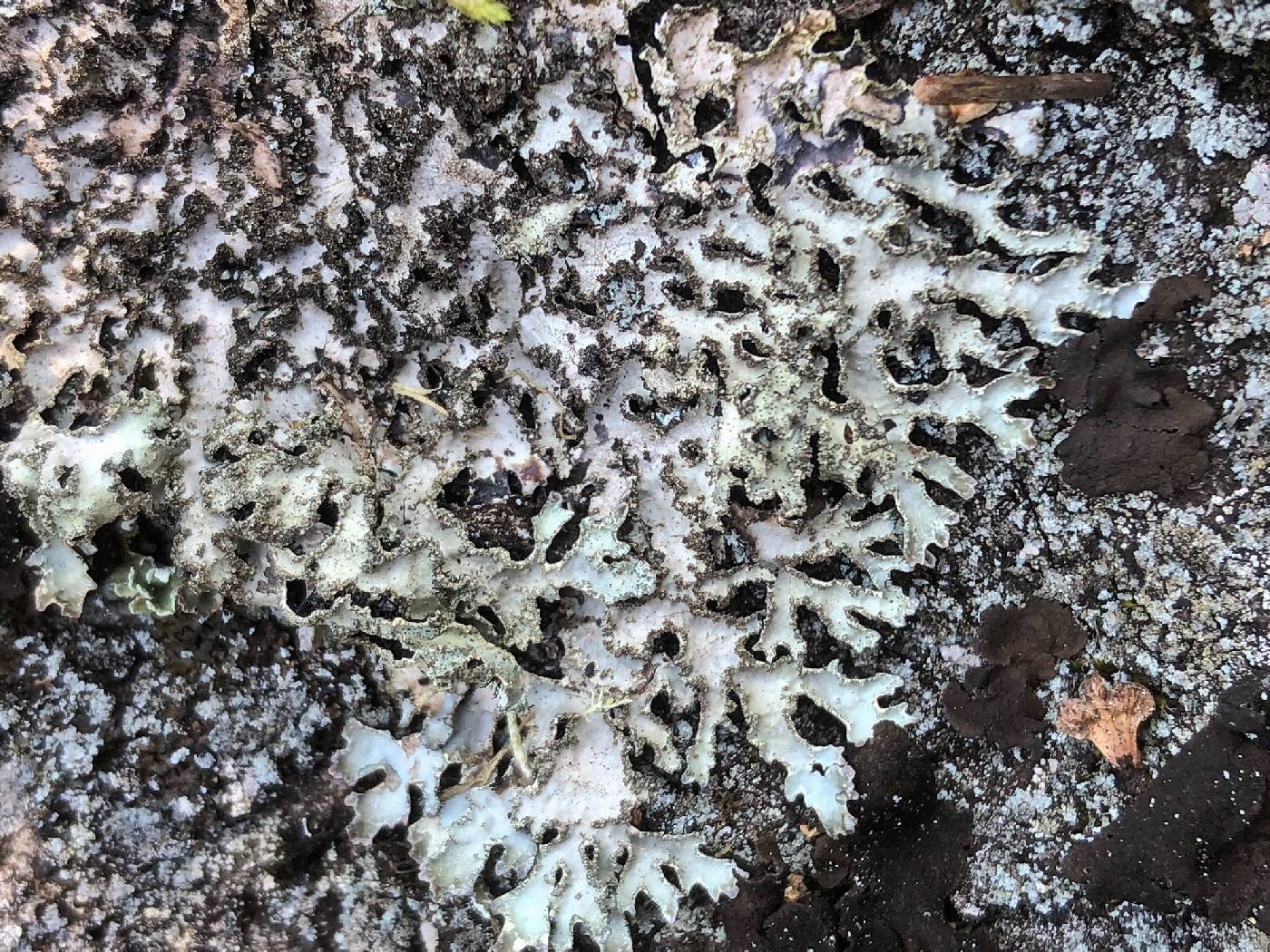
Consortium of Lichen Herbaria
- building a Global Consortium of Bryophytes and Lichens as keystones of cryptobiotic communities -
- Home
- Search
- Images
- Species Checklists
- US States: O-Z >
- US National Parks
- Central America
- South America
- US National Parks
- Southern Subpolar Region
|
Family: Parmeliaceae |
Nash, T.H., Ryan, B.D., Gries, C., Bungartz, F., (eds.) 2002. Lichen Flora of the Greater Sonoran Desert Region. Vol 1. Life habit: lichenized Thallus: foliose, ± circular, lobate lobes: narrow, sublinear, contiguous, rarely imbricate; apices: truncate, eciliate upper surface: gray, plane to foveolate, shiny or dull, strongly white, simple or reticulate maculae, pruinose or not; with or without isidia, soralia, or lobules; pseudocyphellae common, frequently elongated and irregularly effigurate (developing from the maculae) upper cortex: non-pored epicortex, prosoplechtenchymatous medulla: white, loosely packed; cell walls containing isolichenan photobionts: primary one a Trebouxia, secondary photobiont absent lower surface: black, attached by simple, furcated or squarrose, black rhizines; cyphellae, pseudocyphellae and tomentum absent Ascomata: apothecial, laminal on thallus, orbicular, cup-shaped, sessile to pedicellate; margin: prominent with thalloid rim; disc: usually pale to dark brown, imperforate; exciple: gray or hyaline, epithecium: brown or brownish yellow; hypothecium: hyaline asci: lecanoral, wall layers thickened; apex: amyloid, with wide, divergent axial body; c. 8-spored ascospores: simple, ellipsoid to broadly ellipsoid, 11-15 x 6-9 µm but larger in many Asian species; wall thin, hyaline, not amyloid Conidiomata: absent or present, pycnidia laminal or marginal, immersed or emergent sessile conidia: cylindrical, rarely bifusiform, 5-8 x 1 µm Secondary metabolites: upper cortex atranorin and chloroatranorin (rarely usnic acid accessory); medulla some combination of orcinol depsides or depsidones, ß-orcinol depsides or depsidones or aliphatic acids Geography: predominately temperate/boreal to arctic/alpine Substrate: mostly bark, non-calciferous rock, mosses or humus. |
Powered by Symbiota









